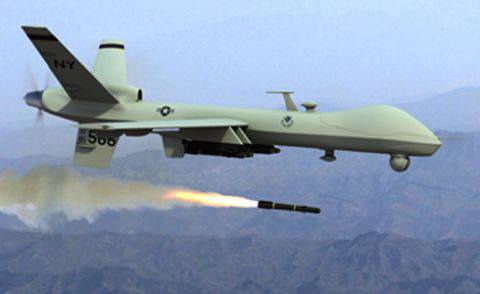
© inconnu
Over two thousand people living in Pakistan have been killed by drone strikes in the past decade, according to a UN human rights investigator calling for America to release death toll figures.
Of the 2,200 dead, 400 were civilians and an additional 200 victims were deemed "probable non-combatants Ben Emmerson, UN special rapporteur on human rights and counterterrorism announced on Friday.
Mr Emmerson is now urging the United States to release its own data on the number of civilian casualties caused by its drone strikes.
Pakistan's Foreign Ministry told Emmerson that since 2004, at least 330 drone strikes were on record in the Federally Administered Tribal Areas, Pakistan's largely lawless region bordering Afghanistan.
In an interim report to UN General Assembly released on Friday, Emmerson said Pakistani government records highlighted that drone attacks had also seriously wounded at least 600since strikes began in 2004.
He said Pakistan had confirmed that
"at least 400 civilians had died as a result of remotely piloted aircraft strikes and a further 200 individuals were regarded as probable non-combatants."
Emmerson, who visited Pakistan in March, noted that principal media monitoring organizations had recorded a "marked drop" in reported civilians casualties from drone strikes in the tribal areas during 2012 and the first half of 2013.
Emmerson urged the United States to declassify to the maximum extent possible information "relevant to its lethal extraterritorial counter-terrorism operations; and to release its own data on the level of civilian casualties inflicted through the use of remotely piloted aircraft, together with information on the evaluation methodology used."
He reported that in Afghanistan, the UN mission said while casualties were likely to have been underestimated, it had assessed that in recent years drones strikes appeared to have inflicted lower levels of civilian casualties than other air strikes.
Emmerson said "the United States appears to have succeeded in avoiding the infliction of large-scale loss of civilian life in Yemen" when carrying out drone strikes. "Nonetheless, there have been a number of incidents in which civilians have reportedly been killed or injured," he said.
"The most serious single incident to date was a remotely piloted aircraft attack on 2 September 2012 in which 12 civilians were reportedly killed in the vicinity of Rada'a," Emmerson said.
"The involvement of CIA in lethal counter-terrorism operations in Pakistan and Yemen has created an almost insurmountable obstacle to transparency," Emmerson said.
"One consequence is that the United States has to date failed to reveal its own data on the level of civilian casualties inflicted through the use of remotely piloted aircraft in classified operations conducted in Pakistan and elsewhere."
Clearing out militant border sanctuaries is considered crucial to bringing stability to Afghanistan by Washington, particularly as the United States-led combat mission ends in 2014. Most, but not all, attacks with unmanned aerial vehicles have been by the US and controlled by the Central Intelligence Agency's Special Activities Division. Britain and Israel have also used them.
During his Senate confirmation process in February, CIA director John Brennan said the tightly guarded number of civilian casualties from drone strikes should published in the public domain.
Senator Dianne Feinstein, a California Democrat who chairs the Senate Intelligence Committee, said at the time that she had been trying to speak publicly about the "very low number of civilian casualties" but was prevented from divulging the actual numbers because they were classified.
In May, US President Barack Obama signed a document that he said codified guidelines for the use of force against terrorists, which states that there must be near-certainty that no civilians would be killed or wounded before drone strikes are taken.
Additional reporting by Reuters
Reader Comments
to our Newsletter